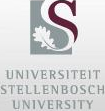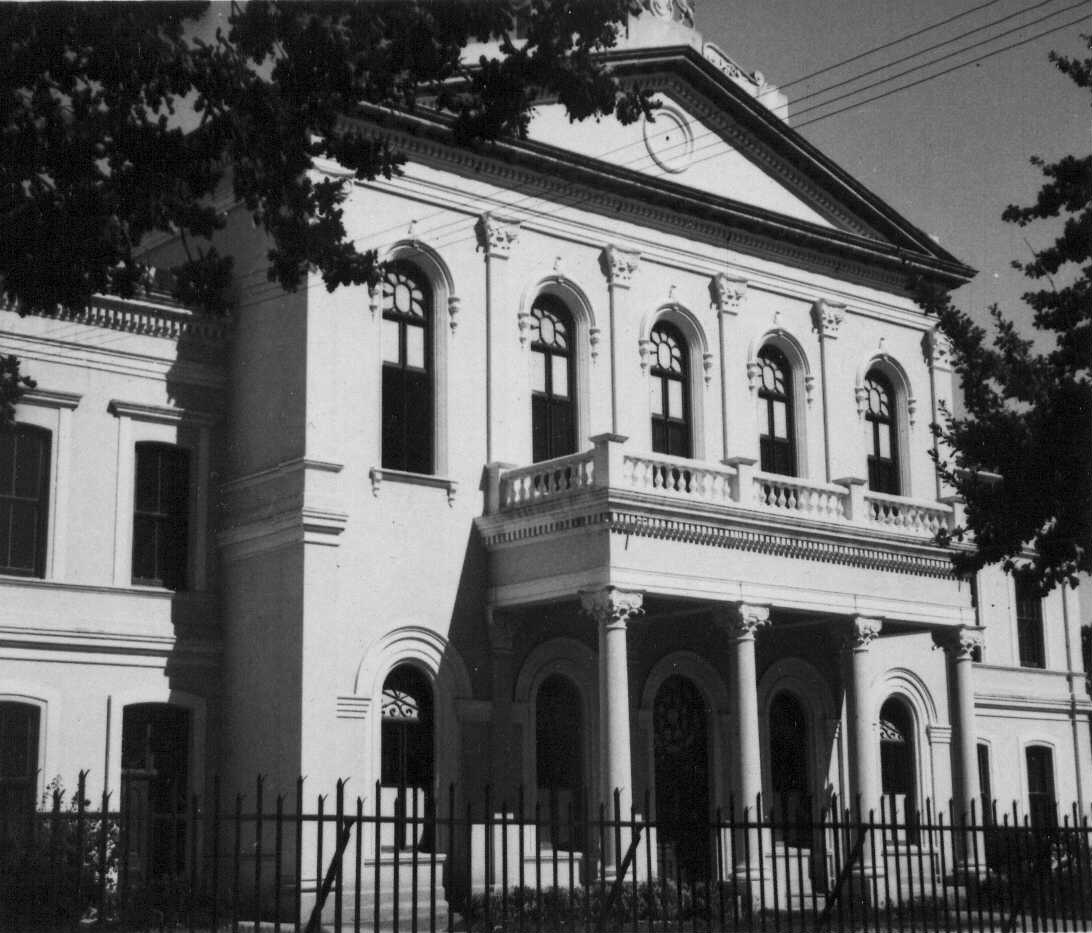Stellenbosch University Emblem

Stellenbosch University Historical Background
 The history of Stellenbosch University (SU) dates as far back as the 17th century, when regular school education was initiated in the town of Stellenbosch in 1685. With the start of the Theological Seminary of the Dutch Reformed Church in 1859, higher education became established in the town. In December 1863, the foundation was laid for the establishment of the Stellenbosch Gymnasium, which became a reality in 1866.
The history of Stellenbosch University (SU) dates as far back as the 17th century, when regular school education was initiated in the town of Stellenbosch in 1685. With the start of the Theological Seminary of the Dutch Reformed Church in 1859, higher education became established in the town. In December 1863, the foundation was laid for the establishment of the Stellenbosch Gymnasium, which became a reality in 1866.Less than a decade after the establishment of the Gymnasium, in 1874, the so-called Arts Department was founded. The Department started out with 120 scholars and two professors of Mathematics and Natural Sciences, and Classical and English Literature respectively. In 1879, the decision was made to build a proper college building to create more teaching space. The new building was inaugurated on 6 November 1886 and renamed Victoria College in 1887 in honour of Queen Victoria’s golden jubilee, the 50-year celebration of her ascent to the British throne.Over the period 1897-1900, Victoria College was transformed with the construction of various facilities such as the Physics laboratory, the Christian Marais library and buildings for Education and Science. A college expansion scheme initiated in 1904 led to the establishment of research chairs in Zoology, Botany, History and Applied Mathematics. In 1911, the first professor of Education was appointed.
The adoption of the University Act in 1916 by the then Union of South Africa Parliament paved the way for the establishment of a university. On 2 April 1918, Victoria College became Stellenbosch University thanks to a £100 000 donation by a local benefactor, Mr Jan Marais of Coetzenburg. Today, his statue can be seen on the Red Square on mid-campus, while his Victorian residence on Coetzenburg houses Maties Sport.
By 1917, Victoria College had 503 students and 40 lecturing staff. In the subsequent decades, the number of students and staff at Stellenbosch University has drastically increased and its academic offering has been expanded to the current ten faculties – AgriSciences, Economic and Management Sciences, Medical and Health Sciences, Engineering, Military Sciences, Arts and Social Sciences, Science, Education, Law and Theology – spread over five campuses.
By the start of 2013, the institution has reached a student corps of 28 000 (including more than 3 000 foreign students), a lecturing staff complement of 939, and some 50 research and service divisions.
Political turmoil
Stellenbosch University could not escape the political turmoil of the apartheid era. Parts of mid-campus were built in “Die Vlakte” (Afrikaans for ‘The Flats’), the area between the modern-day Victoria, Bird and Joubert streets and Banhoek Road. Die Vlakte was home to many coloured residents of Stellenbosch, but was subject to forced removals in terms of the Group Areas Act (Act 41 of 1950), which was promulgated on 27 April, the day on which South Africa today celebrates Freedom Day. The Act was aimed at segregating the various racial groups into separate residential areas.
The former Lückhoff School in Banhoek Road formed the heart of Die Vlakte, and was the first Afrikaans secondary school for coloured children in the Boland. The school building was erected in 1938 after the school had started teaching in various houses and buildings in the area. Learners from as far as Namibia attended, and by 1969, the school had grown to more than 1 000 learners. On 30 October 1969, in terms of the Group Areas Act, the learners had to carry their school benches from the old school to the new school building in Idas Valley.
The fact that the old school building was transferred to Stellenbosch University had been the cause of nearly 40 years’ division between the University and the coloured community of Stellenbosch. In 2007, as a symbol of reconciliation and transformation, the University dedicated the school building to the community, after SU also supported the compilation of In ons bloed, a book on the people of Die Vlakte, in 2006. Since then, a permanent photographic exhibition was installed in the building in 2008 and 2009 in order to recognise those former pupils of the school who went on to become prominent figures in South African society.
Currently, Division for Social Impact and Matie Community Service as well as a number of non-profit and community organisations operate from the old school building. The Faculty of Law’s renovated Legal Aid Clinic and the state-of-the-art building of the Africa Centre for HIV and Aids Management, which was opened in 2012, are adjacent to the old Lückhoff building. Today, that corner of the former Die Vlakte is a beacon of hope and reconciliation, and a symbol of the way in which Stellenbosch University’s expertise is utilised to serve society in order to make a tangible difference in people’s lives.